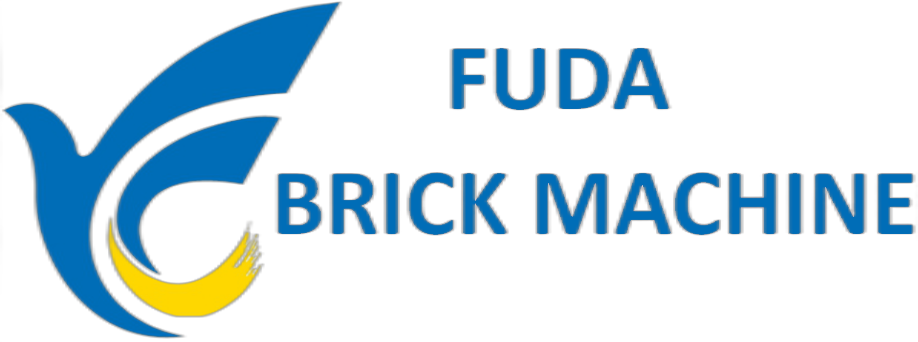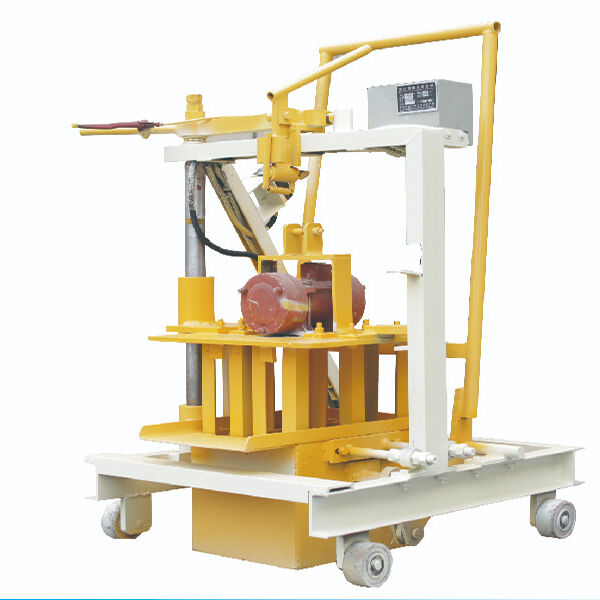Core Differences in Design, Mobility, and Installation: Focus on Mobile Block Making Machines
Defining the Mobile Block Making Machine and Its Functional Scope
Mobile block makers combine everything needed for production in one compact package that can be moved around easily, so blocks get made right where they're needed. These machines work great when jobs keep moving locations, like during highway expansions or setting up temporary structures at events. No need to haul blocks from somewhere else since the machine does the job onsite. What sets these apart is how quickly they can be set up and moved again compared to traditional setups. They aren't built for massive volumes though, focusing instead on flexibility and getting up and running fast even in tricky conditions.
Design and Mobility: Key Differences Between Mobile and Stationary Machines
Mobile units come with compact frames mounted on trailers that have their own power systems built right in, so they can be moved around easily using regular trucks and haulers. On the flip side, stationary machines need to be bolted down permanently onto strong concrete bases and connected to fixed power and water lines. These mobile frames tend to weigh about 35 to 50 percent less than the ones sitting still, which makes them much easier to move from one place to another when needed. Stationary versions have these heavy duty bases because they need extra support for bigger vibrating parts and storage tanks for raw materials. Sure, this setup gives them higher output numbers, but it comes with a big downside they lose all that flexibility to relocate quickly.
Installation Requirements and Site Flexibility Compared
| Requirement | Mobile Machine | Stationary Machine |
|---|---|---|
| Foundation | None | 15-20m³ concrete base |
| Setup Time | 1-2 days | 2-3 weeks |
| Power Configuration | Integrated generator | Three-phase grid connection |
This streamlined setup enables mobile units to operate effectively in remote areas or dense urban environments where space and infrastructure limit stationary installations.
Impact on Project Timelines and Workflow Efficiency
Mobile machines reduce pre-construction timelines by an average of 18–22 days by enabling immediate production upon arrival. While a 2023 study of 47 construction projects found that stationary machines achieved 12–15% faster cycle times in single-location operations, mobile units reduced material transport costs by 40% across multi-site developments, significantly improving overall workflow efficiency.
Production Capacity, Output Rates, and Block Quality Comparison
Output Rates of Mobile vs. Stationary Machines Under Real-World Conditions
When it comes to big scale production, stationary block machines are the workhorses, cranking out anywhere from 500 to as many as 12,000 blocks during an 8 hour shift. Mobile versions aren't built for quantity but rather flexibility, typically producing between 100 and 4,000 blocks over the same timeframe. The difference becomes even more pronounced in city environments where these fixed installations benefit from reliable electricity and steady material supplies that keep them running almost nonstop. Things get trickier for those mobile setups working on housing developments far from civilization though. They tend to only hit around 70% of what they could potentially produce because workers have to manually feed materials into them, plus all sorts of weather issues throw off their rhythm throughout the day.
Production Capacity for Medium and Large-Scale Construction Projects
For daily outputs exceeding 10,000 blocks, stationary machines maintain 98% uptime compared to mobile units’ 82%, according to 2023 industry studies, making them ideal for long-term infrastructure work. However, mobile units excel in phased developments—producing 3,500–8,000 blocks daily, one machine can serve multiple small subdivisions without permanent site preparation.
Role of Automation and Operator Skill in Maintaining Output Consistency
Automation plays a critical role in consistency: stationary machines achieve under 2% variance in block density thanks to precision controls, while mobile units experience 4–7% variation due to manual mixing processes. Key automated features include:
- Fully automatic weighing systems maintaining ±0.5% material ratios
- Hydraulic compression cycles standardized to ±2 seconds
- Operator training reducing setup errors by 15–20%
Targeted training programs can improve mobile machine consistency by up to 30%, narrowing the quality gap with stationary systems.
Precision, Uniformity, and Structural Integrity Across Machine Types
The stationary type of machines can achieve around 98% dimensional accuracy with less than 1 mm variation thanks to their rigid molds and powerful vibration systems that apply between 12 to 18 kN of force. Mobile units typically hit about 95% accuracy but allow for up to 3 mm variance instead. Blocks made on these stationary setups show roughly 40% better strength when tested after the standard 28 day curing period according to ASTM tests from last year. When looking at things like interior partitions or temporary wall structures where extreme strength isn't needed, the blocks produced by mobile equipment usually work just fine while saving money overall.
Cost Analysis: Initial Investment, Maintenance, and ROI
Upfront Costs: Mobile vs. Stationary Block Making Machine Budgeting
According to a recent global construction industry report from 2023, mobile equipment typically needs about 25 to 40 percent less money upfront compared to fixed installations. Why? Because these mobile systems come already assembled at the factory and don't need all that extra groundwork. Fixed units on the other hand end up costing more because they require special concrete foundations and lots of site prep work. And this gets even pricier in city centers where real estate itself can tack on anywhere between eight to twelve dollars extra for every square meter of space needed.
Return on Investment Based on Project Duration and Utilization Rate
ROI varies significantly by project scope:
- Mobile units typically break even within 18 months for contracts under $200,000
- Stationary systems take 2.5+ years to recoup costs but yield 30% higher margins on large-scale, long-term jobs
A recent industry analysis shows that projects lasting over 24 months achieve 22% better ROI with stationary machines, while short-term initiatives favor mobile solutions by a 3:1 cost-benefit ratio.
Long-Term Maintenance and Operational Complexity Costs
Stationary concrete machines tend to cost about 30% more for maintenance over five years because their conveyor belts and hydraulic systems just plain wear out faster. The newer mobile units have this modular design that cuts down repair time by nearly two thirds according to a recent study from Concrete Tech in 2024. But there's a trade off here folks. Those smaller mobile units take a beating when running at full capacity for long periods. We're talking around an extra penny and a half to almost three cents per block in operating expenses compared to what the bigger stationary machines would typically cost.
Scalability and Application Fit by Project Size and Location
Matching Mobility Needs with Production Goals in Urban vs. Remote Sites
When it comes to cities, mobile machinery really shines since around two thirds of construction firms these days look for gear that takes up little space on site according to Construction Materials Journal from last year. These machines let companies set up shop wherever they need to go, producing what's needed right there in different parts of town without needing big permanent setups. For those bigger jobs far away from everything else like building dams, sticking with traditional fixed installations actually cuts down on how much stuff needs to be moved around by somewhere between 18 and 22 percent. That happens because all the work gets done close to where materials come from in the first place.
Scalability for Small, Medium, and Large Construction Projects
| Project Scale | Mobile Unit Capability | Stationary Unit Advantage |
|---|---|---|
| Small (500–5,000 blocks/day) | – Rapid setup/teardown | – Underutilized capacity |
| Medium (5,000–15,000 blocks/day) | – Multi-unit deployment | – Single-system operation |
| Large (15,000+ blocks/day) | – Logistics complexity | – Automated material handling |
Mobile setups scale horizontally by deploying multiple units, while stationary plants scale vertically via integrated conveyors and storage silos.
Use Cases: When to Choose a Mobile Block Making Machine vs. Stationary Unit
Opt for mobile block making machines when:
- Projects last ≤6 months
- Sites lack poured concrete foundations
- Daily output needs range between 1,000–10,000 blocks
Choose stationary units when:
- Production exceeds 12,000 blocks/day for 8+ months
- Facilities have dedicated power and water access
- Projects require <2% dimensional variance in final products
Road maintenance teams often deploy mobile units for emergency repairs, whereas regional producers serving 50+ sites typically invest in stationary plants equipped with robotic palletizing systems.
Decision Framework: Selecting the Right Machine for Your Project
Evaluating Project Scale, Duration, and Location for Optimal Selection
Project requirements should guide equipment selection. Mobile machines are best suited for:
- Multi-site operations: Especially in remote or geographically dispersed zones
- Short-term contracts: Projects under six months where relocation outweighs setup costs
- Low-to-medium output demands: Daily production below 5,000 standard blocks
Urban developments with fixed locations and output needs above 10,000 blocks/day generally benefit more from stationary units. A 2023 survey by Construction Machinery Journal found that 78% of contractors using mobile machines reported 30% faster site deployment compared to stationary alternatives.
Resolving the Trade-Off: High Output vs. High Mobility
Stationary machines offer 15–20% higher hourly output through optimized vibration and automated pallet changers. Mobile units, however, reduce transportation logistics by 45%, based on field data from infrastructure projects in mountainous regions. Prioritize mobility when:
- Access roads are unpaved or unstable
- Phased production is needed across multiple zones
- Grid power or water supply is unreliable
Case Study: Deployment Strategy for Large-Scale Housing Initiative
One of our main suppliers worked with a client who managed to speed up their housing development over 14 months by mixing different kinds of machinery. They used mobile machines to make the partition walls across four separate locations, while keeping a big fixed plant running for the heavy structural parts. The combination approach really paid off. Equipment was being used almost all the time (around 92% of capacity), they cut down on fuel costs by nearly a third, and workers didn't have to wait around so much when rains forced temporary closures at construction sites during the monsoon season.
FAQs
What is the main advantage of mobile block making machines?
Mobile block making machines offer flexibility and onsite production, reducing transport costs and setup time compared to stationary machines.
How do stationary machines excel in production?
Stationary machines have higher output rates and achieve greater dimensional accuracy in block production, making them ideal for large-scale projects.
Which machine is better for short-term projects?
Mobile machines are better suited for short-term projects, especially those under six months, due to quicker setup and tear-down capabilities.
What factors influence the decision between mobile and stationary machines?
Project duration, location, production needs, and site conditions are key factors in deciding between mobile and stationary block making machines.
Table of Contents
- Core Differences in Design, Mobility, and Installation: Focus on Mobile Block Making Machines
- Production Capacity, Output Rates, and Block Quality Comparison
-
Cost Analysis: Initial Investment, Maintenance, and ROI
- Upfront Costs: Mobile vs. Stationary Block Making Machine Budgeting
- Return on Investment Based on Project Duration and Utilization Rate
- Long-Term Maintenance and Operational Complexity Costs
- Scalability and Application Fit by Project Size and Location
- Matching Mobility Needs with Production Goals in Urban vs. Remote Sites
- Scalability for Small, Medium, and Large Construction Projects
- Use Cases: When to Choose a Mobile Block Making Machine vs. Stationary Unit
- Decision Framework: Selecting the Right Machine for Your Project

